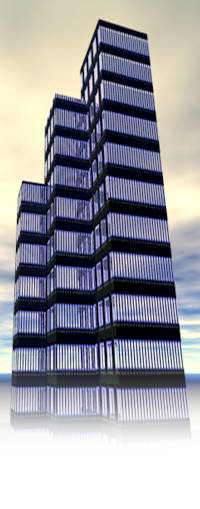|
Of Shields and
Signals
High Fidelity recording has been around 1948, and mass-market stereo since the late fifties. When I
was setting up what I thought to be the quintessential bachelor pad, I never understood why my use
of shielded speaker cables didn't mitigate the interference that adjacent power cords introduced into
my speaker circuits. I mean, a shielded cable's raison d'etre is to protect the signal it's
carrying from external interference isn't it?
Well, maybe. If not, the shield must at least have some attenuating effect on AC power interference, right? Nope.
Absolutely none. Zilch. Nada. L'ouve.
Centuries before Ben Franklin played around with kites in thunderstorms, the lodestone and
its magnetic properties were known to humankind, probably as technological spinoff from the
smelting of iron. Though Alessandro Volta's first batteries in 1800 signaled the
beginning of manmade dynamic (as opposed to static) electricity, it took nearly another
decade for Oersted to find the link between electricity and magnetism, and another generation
to discover something called induced current, which is something that happens when you move
a wire through a magnetic field (or move the field across a stationary wire; it doesn't matter
which is stationary and which moves). To put it in highly technical terms, when relative motion
(in the correct orientation, as Oersted ruefully discovered some years after he started looking
for the phenomenon) exists between a field and a wire, the field squishes electrons along the wire.
(Actually, what he discovered was the inverse phenomenon, that electrons zipping
down a wire puff a magnetic field around the wire.)
Metals are good conductors because their electrons are easily squished, while nonmetals make good insulators
because their electrons like it just fine where they are. A certain class of metals, comprised by the
iron triad, exhibit what's called ferromagnetic behavior; you can magnetize them.Although the classic
conductor and shield materials, copper and aluminum, are outstanding conductors of electricity, they
can't be magnetized.
So what. So what? So this. When a magnetic field from an adjacent power conductor
encounters the shield of a signal cable, it goes right through it and the conductor(s) the shield
surrounds, generating induced currents in the shield and enclosed conductors. These induced currents
are impressed upon the signal currents in the cable, distorting them, which we then detect as interference.
So how do you keep power line interference out of signal cables?
Simple. Put the signal cables in ferromagnetic conduit:
GRS,
IMC,
or
EMT,
all of which are steel (lotsa iron in steel) conduits. Then the magnetic
properties of the conduit trap the magnetic field from the adjacent power conductor in the body of the
conduit, preventing the field from reaching the signal conductors within.
Is this done?
Not usually. It's not necessary in NYC where the power conductors
are run in ferromagnetic conduit, not letting their magnetic
fields out in the first place. In other jurisdictions, where nonmetallic cable
is permitted, or where the power conductors might be run in PVC or
Aluminum conduit, it would remain a consideration. In any case, the thumb
rules about crossing conductors of unlike systems at 90 degree angles and
avoiding situations leading to nearby parallel runs between unlikesystems
go a long way to minimizing or eliminating interference.
So why the shield?
Well, in process instrumentation it's grounded at one point (usually the source) to bleed off capacitive
charge between the paired cables so surrounded. In coaxial
transmission lines it has to do with the line's (commonly 75 ohm) characteristic impedance, contributing to
the transfer of maximum power between the source and the load.
In stereo systems it probably has more to do with status (like gold plated connectors)
than anything else, and is actually a detrimental misapplication
when used as a transmission line for 8 ohm or 16 ohm speaker loads.
Of Cables and Conductivity
From time to time The
Aluminum Association
sends me literature extolling the virtues of aluminum as a
conductor, defending against its bad rap in the construction industry by (correctly) attributing many of its
problems to incorrect installation procedures. However, being astute
students of Mark Twain's comments on statistics, they take an obfuscating
leap in claiming (again correctly) aluminum to be the best conductor there is on the basis of mass.
Since aluminum cable is not sold by, nor installed in
buildings by the pound (or slug, for you arcane purists), the claim
lacks meaning. In fact, aluminum cable's extremely low density, for
reasons of increased wire and conduit sizes, made it absolutely noncompetitive
with copper until a severe copper shortage of a few decades back. In the customary
meaningful terms of volume resistivity, the best of the conductors of choice is silver, with copper hard on
its heels, then gold, and finally aluminum, dead last.
In the real world, relative diameters of equal conductivity sections are as shown below:
●●●●
Silver Copper Gold Aluminum
1.00 1.02 1.20 1.28
Figure 1 - Of Sizes and Sections
Aluminum's claim to fame is its incredible lightness. with a specific gravity about a third of that of copper.
What with buildings tending to be stationary constructs, weight is not the
issue it might be in an automobile. Unfortunately, no good way has been
found to terminate aluminum in the smaller (solid) wire sizes that would be used in a vehicle, and even when
stranded, it's not as flexible as copper. It's brittle, cold flows under screw terminals, oxidizes to form
high resistance connections, and is more difficult to pull because of its stiffness. Other than that, it's great.
Next Issue
|
